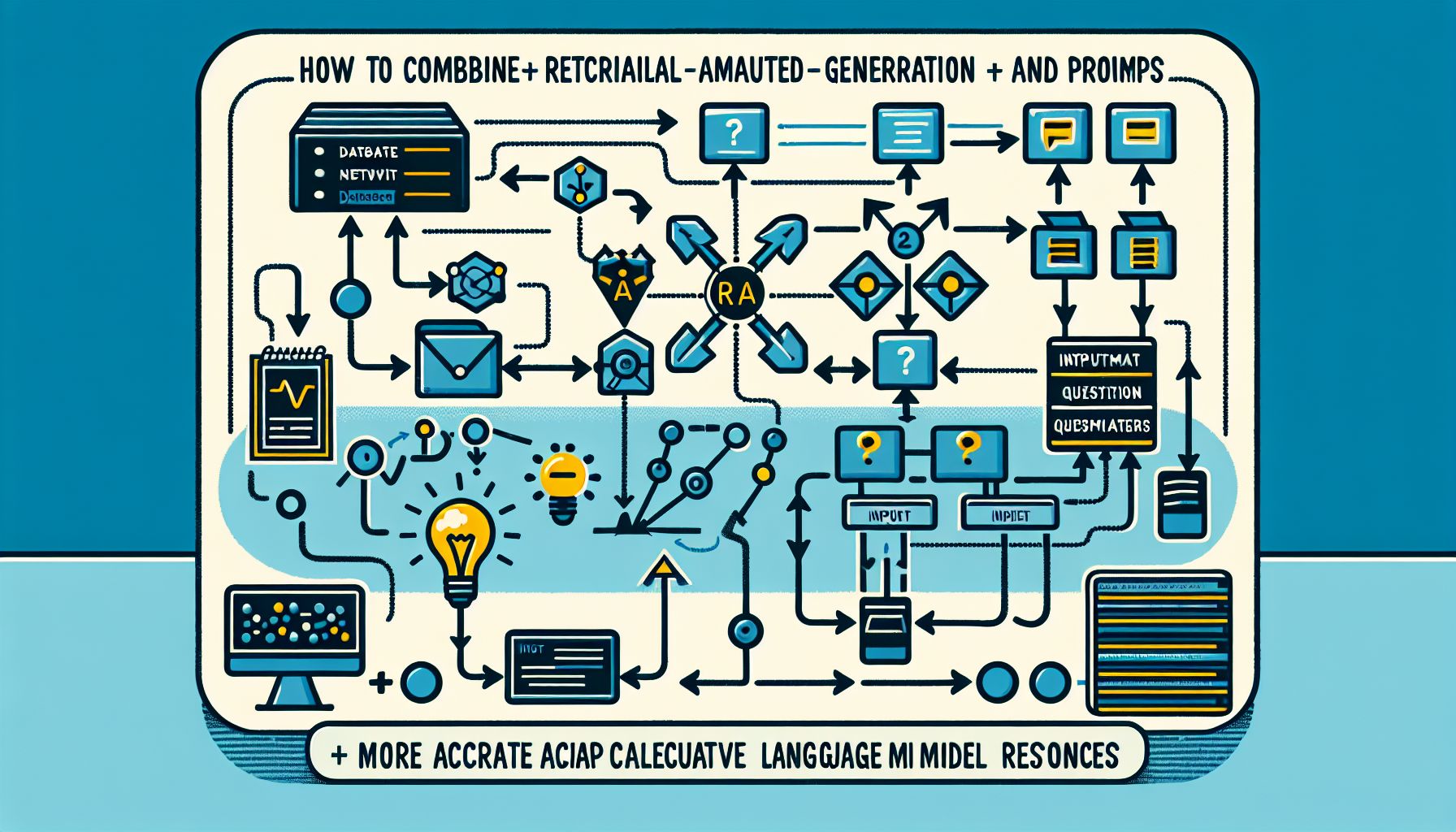📌 Let’s explore the topic in depth and see what insights we can uncover.
⚡ “Ever feel like your LLM model isn’t living up to its full potential? Discover how the fusion of RAG and Prompting techniques can supercharge your machine’s responses, making it a lot more than just a parrot.”
In the dynamic world of AI and machine learning, methodologies evolve at the speed of thought. One minute you’re marveling at the capabilities of large language models (LLMs) like GPT-3, and the next, you’re immersed in the exciting possibilities of retrieval-augmented generation (RAG) models. But what if you could combine these two technologies to create an even more powerful AI tool? That’s what we’re here to explore. In this blog post, we’ll delve into the process of combining RAG and prompting for more accurate LLM responses. Prepare to dive into a sea of AI knowledge, where we’ll navigate the waves of RAG and LLMs, and emerge with a treasure trove of insights! 📚🤖
🚀 The Magic of Large Language Models

Mastering RAG and Prompting for Precise LLM Responses
The journey begins with understanding the magic of large language models (LLMs), such as OpenAI’s GPT-3. LLMs are pre-trained on a vast amount of text data, allowing them to generate human-like text that’s contextually relevant and semantically rich. 📖💡 LLMs can write essays, answer questions, translate languages, and even write poetry. But the magic doesn’t stop there. LLMs are also capable of zero-shot learning, which means they can understand and respond to prompts they’ve never seen before. It’s like having a genie in a bottle that can grant a multitude of intellectual wishes. 🧞♂️ However, in spite of their impressive abilities, LLMs are not without their limitations. One of the primary challenges is that they can sometimes produce responses that are plausible-sounding but factually incorrect. 🔍 Interestingly, where the power of retrieval-augmented generation (RAG) comes into play.
🧩 Retrieval-Augmented Generation: The Missing Piece of the Puzzle
Retrieval-Augmented Generation, or RAG, is a two-step process that combines the strengths of retrieval-based models and seq2seq models. The first step involves retrieving relevant documents from a database using a question, while the second step involves generating a response based on the retrieved documents and the question. Think of RAG as a wise librarian. When asked a question, the librarian first locates the most relevant books (the retrieval step), then crafts an answer based on the information in those books (the generation step). 📚🔎 RAG models, such as Facebook’s RAG model, help to overcome the issue of incorrect information in LLM responses. By retrieving and using relevant documents during the generation process, the RAG model ensures that the responses are not only contextually relevant but also factually correct.
🤝 The Power Duo: Combining RAG and Prompting
Now that we understand the individual capabilities of RAG and LLMs, let’s explore how they can be combined for more accurate LLM responses. By using RAG as a retrieval mechanism and LLMs as a generation mechanism, we can create a hybrid model that harnesses the strengths of both.
Prompting
🔍 Interestingly, where the process begins. A well-structured prompt is fed to the model. The prompt could be a question, a statement, or even a command. The key is to make the prompt clear and concise. For instance, if you’re looking for information about the solar system, your prompt could be “Tell me about the solar system.”
Document Retrieval
Next, the RAG model retrieves documents relevant to the prompt from its database. This step is crucial as it ensures that the generated response is anchored to factual information.
Response Generation
Once the relevant documents are retrieved, the LLM takes over. Using both the prompt and the retrieved documents, the LLM generates a contextual and factually accurate response. This combination of RAG and prompting for LLMs is a bit like a relay race. The baton (in this case, the prompt) is passed from one runner (RAG) to the next (LLM), with each playing a crucial role in reaching the finishing line (a more accurate response). 🏃♀️🏃♂️🎽
🧠 Fine-Tuning for Optimal Performance
While the combination of RAG and prompting can lead to more accurate LLM responses, fine-tuning the model can further enhance its performance. Fine-tuning is like the final polish on a newly-built car, enhancing its features and functionality. One approach to fine-tuning involves adjusting the parameters of the RAG model to better fit the prompt. For instance, you can experiment with the number of documents retrieved or the weight given to the retrieved documents during the generation process. Another approach involves fine-tuning the LLM itself. This could involve adjusting its temperature (which controls the randomness of its outputs) or its top-k sampling (which limits the model to considering only the k most likely next words). Fine-tuning your model is like cooking a gourmet dish. You start with quality ingredients (RAG and LLMs), but it’s the precise seasoning and cooking time that really brings out the flavors and makes the dish exceptional. 🍲👨🍳
🧭 Conclusion
The world of AI and machine learning is a fascinating one, filled with endless possibilities and exciting discoveries. The combination of retrieval-augmented generation (RAG) and prompting for large language models (LLMs) is one such discovery that promises to revolutionize the way we interact with AI. By combining the retrieval capabilities of RAG and the generation prowess of LLMs, we can create more accurate and reliable AI models. And with fine-tuning, we can take this power duo to even greater heights. So, the next time you’re in the AI kitchen, remember this recipe: Take one part RAG, one part LLM, add a dash of well-structured prompts, retrieve relevant documents, generate contextual responses, and finally, fine-tune to taste. Bon appétit! 🥂🍽️
🚀 Curious about the future? Stick around for more discoveries ahead!
